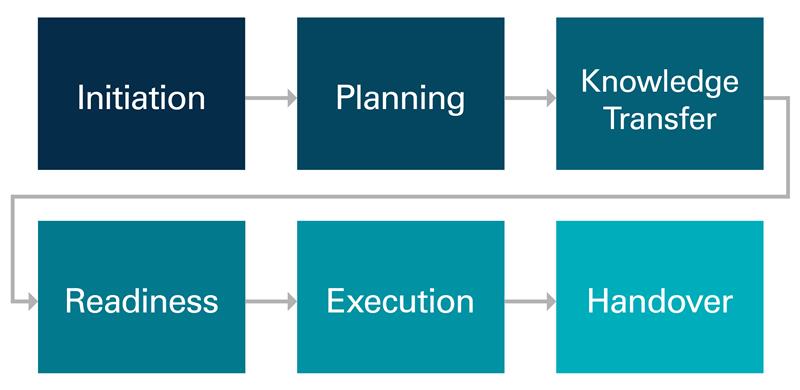Efficient communication stands as a cornerstone of thriving project teams, enabling the smooth exchange of thoughts, ideas, and emotions among members. Nevertheless, communication mishaps can occur despite diligent efforts, resulting in misunderstandings, conflicts, and missed collaborative opportunities. While factors such as language disparities and cultural distinctions contribute to these errors, a subtler dimension is often overlooked: inherent programmatic causes rooted in how our brains process and interpret information. This article delves into these programmatic causes of communication errors within project teams and suggests strategies to mitigate their impact.
Within project teams, individuals with diverse backgrounds and viewpoints are subject to cognitive biases that affect communication. For instance, confirmation bias may cause team members to disregard alternative perspectives, hindering innovation and problem-solving. Recognizing and addressing these biases can foster a more inclusive and open communication atmosphere.
Ambiguity in communication within project teams can impede progress and lead to misunderstandings. Unclear project directives or vague task assignments may result in varying interpretations among team members, affecting productivity and unity. Clarifying expectations and modeling concise communication can alleviate the effects of semantic ambiguity.
Emotions significantly influence project team dynamics, shaping individuals’ perceptions and responses to communication. Stress, frustration, or resentment can cloud judgment and hinder effective collaboration. Encouraging emotional intelligence and providing avenues for open dialogue can help team members navigate emotional influences and promote constructive communication.
Nonverbal cues, such as body language and tone of voice, are vital for conveying meaning and intent within project teams. However, in remote or asynchronous settings, these cues may be limited or absent, heightening the risk of miscommunication. Leveraging video conferencing, emoticons, or explicit clarification can compensate for the absence of nonverbal cues and enhance communication clarity.
Project teams often grapple with vast amounts of information, leading to cognitive overload and communication breakdowns. Crucial messages may get lost amid a barrage of emails, notifications, and project updates, causing confusion and inefficiency. Implementing effective information management strategies, such as prioritizing key messages and consolidating communication channels, can alleviate information overload and enhance communication effectiveness.
Each team member possesses a distinct communication style shaped by personality, experience, and cultural background. Understanding and respecting these differences is imperative for fostering collaboration and synergy within project teams. Encouraging flexibility and adaptability in communication styles can bridge gaps and facilitate more harmonious interactions among team members.
The toll of ineffective communication on projects can be significant and multifaceted:
Delays and Missed Deadlines: Miscommunication can lead to misunderstandings about project requirements, timelines, and responsibilities, resulting in delays and missed deadlines.
Quality Issues: Poor communication can lead to unclear instructions or requirements, resulting in deliverables not meeting quality standards or client expectations.
Increased Costs: Revisions, rework, and additional resources needed to correct communication-related errors can increase project costs.
Conflicts and Tension: Misunderstandings and lack of clarity can lead to conflicts among team members, damaging team morale and productivity.
Low Morale and Engagement: Persistent communication problems can lead to frustration and disengagement among team members, reducing overall productivity and motivation.
Risk of Failure: In extreme cases, consistent communication failures can jeopardize the success of the entire project, leading to project failure or termination.
Overall, ineffective communication can have far-reaching consequences, impacting project timelines, budgets, quality, team dynamics, and, ultimately, the success of the project itself. Therefore, addressing communication issues is crucial for driving project success and achieving desired outcomes.
Addressing Programmatic Communication Errors: Although some programmatic causes of human communication errors are inherent to our cognitive processes, strategies can be employed to minimize their impact:
- Active Listening: Practice active listening techniques, including paraphrasing and asking clarifying questions, to ensure mutual understanding in communication.
- Emotional Awareness: Develop emotional intelligence skills to better comprehend and regulate emotions in communication, reducing the influence of emotional biases on interactions.
- Cultural Sensitivity: Foster understanding of cultural differences in communication styles and norms, adjusting communication strategies accordingly when engaging with individuals from diverse backgrounds.
- Clear Communication: Strive for clarity and precision in communication, avoiding ambiguity and utilizing concrete language whenever feasible.
- Feedback Mechanisms: Establish feedback mechanisms to facilitate transparent communication, allowing for adjustments and clarification when misunderstandings arise.
By acknowledging and addressing these programmatic causes of communication errors, project teams can nurture a culture of transparent, effective communication, driving success and achieving objectives with greater clarity and cohesion. Through ongoing reflection, feedback, and adaptation, teams can navigate the intricacies of human communication and harness its transformative potential to accomplish shared goals.
Where does your communication fall short?

